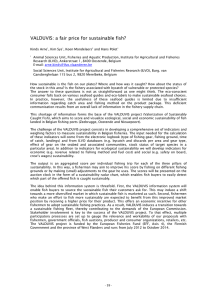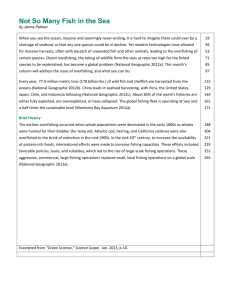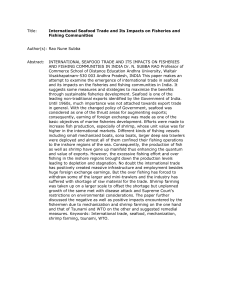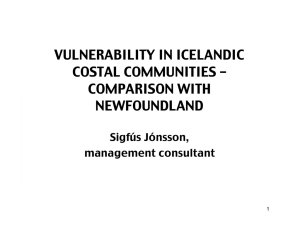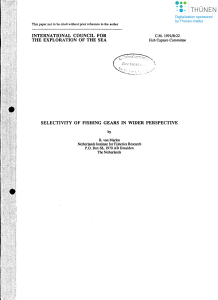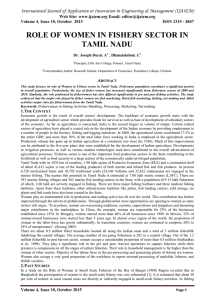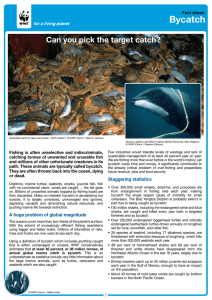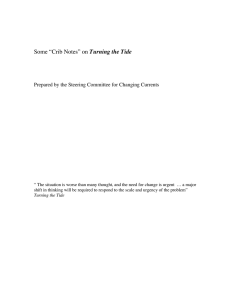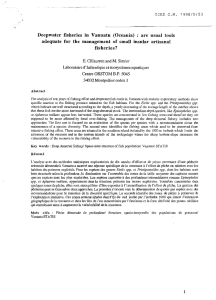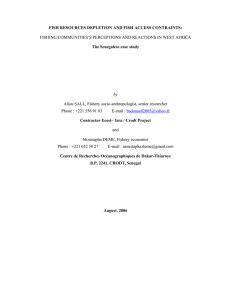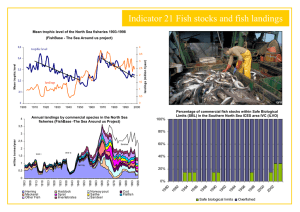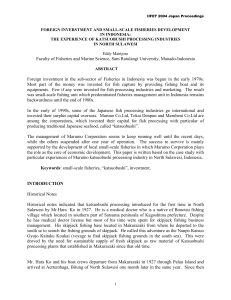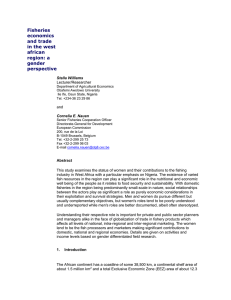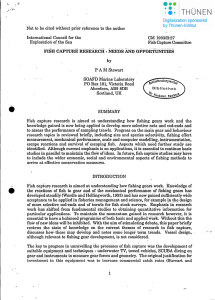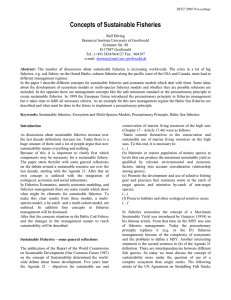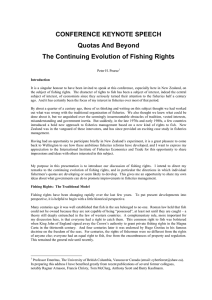VALDUVIS: a fair price for sustainable fish Arne Kinds , Kim Sys
advertisement
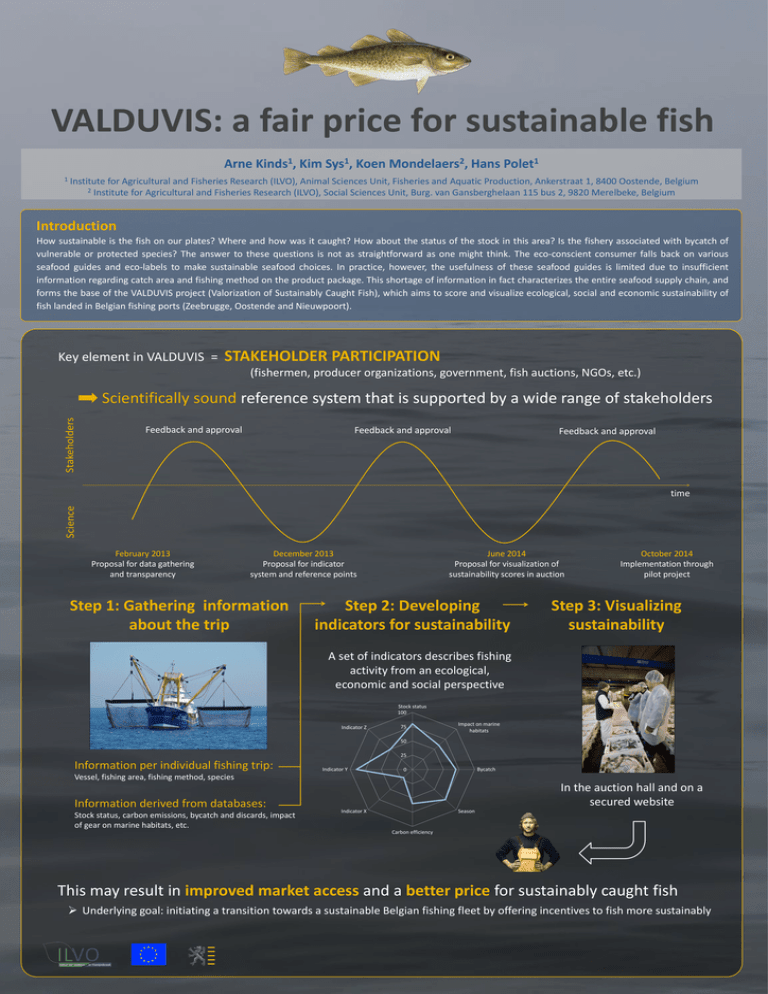
VALDUVIS: a fair price for sustainable fish Arne 1 1 Kinds , Kim 1 Sys , Koen 2 Mondelaers , Hans 1 Polet Institute for Agricultural and Fisheries Research (ILVO), Animal Sciences Unit, Fisheries and Aquatic Production, Ankerstraat 1, 8400 Oostende, Belgium 2 Institute for Agricultural and Fisheries Research (ILVO), Social Sciences Unit, Burg. van Gansberghelaan 115 bus 2, 9820 Merelbeke, Belgium Introduction How sustainable is the fish on our plates? Where and how was it caught? How about the status of the stock in this area? Is the fishery associated with bycatch of vulnerable or protected species? The answer to these questions is not as straightforward as one might think. The eco-conscient consumer falls back on various seafood guides and eco-labels to make sustainable seafood choices. In practice, however, the usefulness of these seafood guides is limited due to insufficient information regarding catch area and fishing method on the product package. This shortage of information in fact characterizes the entire seafood supply chain, and forms the base of the VALDUVIS project (Valorization of Sustainably Caught Fish), which aims to score and visualize ecological, social and economic sustainability of fish landed in Belgian fishing ports (Zeebrugge, Oostende and Nieuwpoort). Key element in VALDUVIS = STAKEHOLDER PARTICIPATION (fishermen, producer organizations, government, fish auctions, NGOs, etc.) Stakeholders Scientifically sound reference system that is supported by a wide range of stakeholders Feedback and approval Feedback and approval Feedback and approval Science time February 2013 Proposal for data gathering and transparency December 2013 Proposal for indicator system and reference points Step 1: Gathering information about the trip June 2014 Proposal for visualization of sustainability scores in auction Step 2: Developing indicators for sustainability October 2014 Implementation through pilot project Step 3: Visualizing sustainability A set of indicators describes fishing activity from an ecological, economic and social perspective Stock status 100 Indicator Z 75 Impact on marine habitats 50 25 Information per individual fishing trip: Indicator Y Bycatch 0 Vessel, fishing area, fishing method, species Information derived from databases: Stock status, carbon emissions, bycatch and discards, impact of gear on marine habitats, etc. In the auction hall and on a secured website Indicator X Season Carbon efficiency This may result in improved market access and a better price for sustainably caught fish Underlying goal: initiating a transition towards a sustainable Belgian fishing fleet by offering incentives to fish more sustainably
